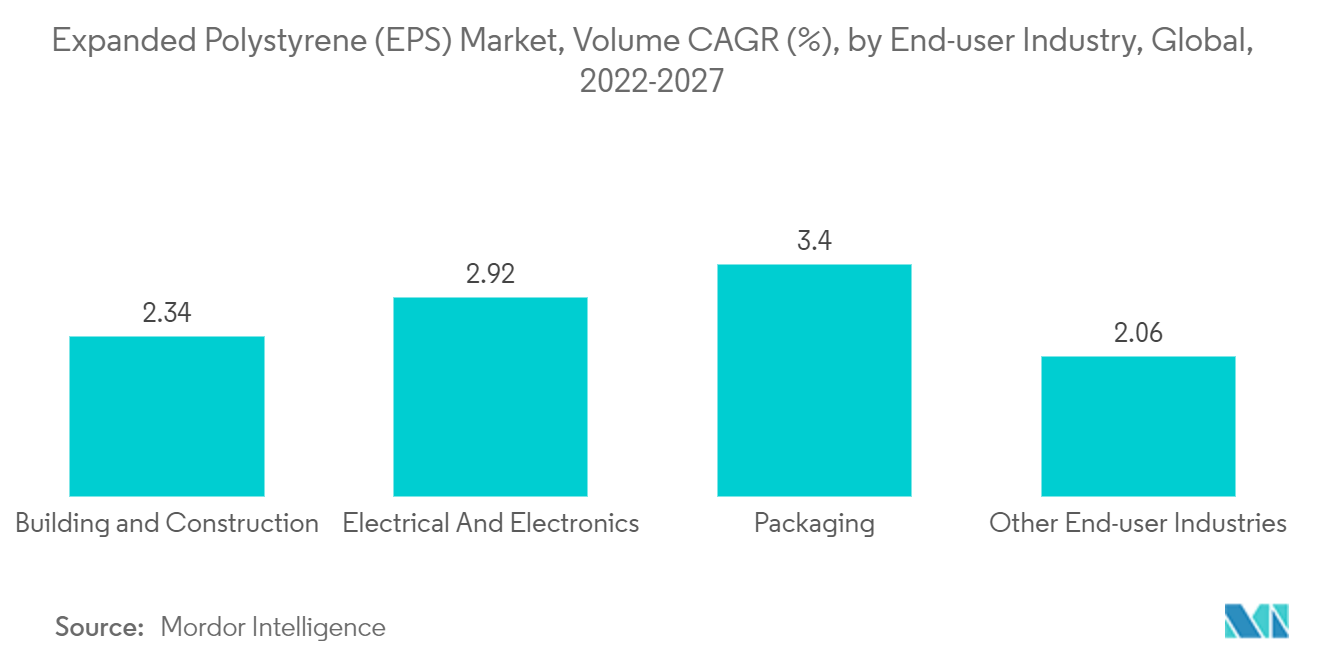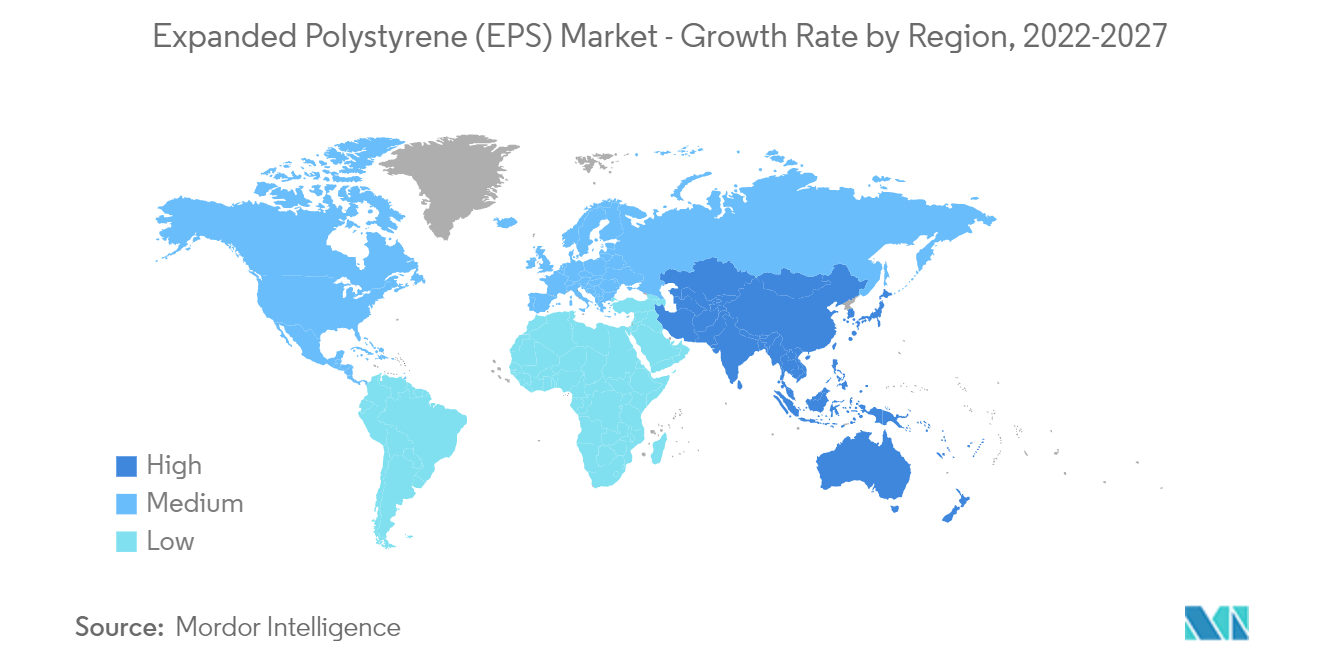Market Trends of Expanded Polystyrene (EPS) Industry
Increasing Demand from the Packaging Industry
- EPS is one of the most cost-effective protective packaging materials available and is used worldwide to protect goods from transit damage. Because EPS offers an exceptional balance of lightness, rigidity, and shock absorption, it is frequently used to package delicate items like white goods and other fragile products.
- Expanded polystyrene is a light cellular plastic made up of tiny hollow spheres. Due to its closed cellular structure, EPS has numerous exceptional qualities that make it useful in a variety of packaging industries, including food packaging, industrial packaging, pharmaceutical packaging, etc.
- Industrial packaging frequently utilizes EPS packaging. Due to its shock absorption ability, EPS offers industrial items the perfect material for comprehensive protection and safety from risk during transit and handling. The hard, lightweight foam can be moulded into any shape to protect and insulate delicate things during storage and transportation, such as fragile medical equipment, electronic components, electrical consumer goods, toys, and horticultural products.
- According to a report published by PMMI, 'The Association for Packaging and Processing Technologies,' the value of the global packaging industry reached USD 42.2 billion in 2021, owing to the increasing population, growing sustainability concerns, more spending power in developing regions, and increasing demand for smart packaging, among others.
- According to the Packaging Industry Association of India (PIAI), the Indian packaging industry is expected to grow at a rate of 22% during the forecast period. Moreover, the Indian packaging market is expected to reach USD 204.81 billion by 2025, registering a CAGR of 26.7% between 2020 and 2025. Therefore, the EPS foam market is expected to grow in the region.
- EPS is the perfect material for packing a variety of fish and food products. According to Statista, the global seafood market reached a value of USD 253 billion in 2021, and it is projected to reach USD 336 billion by 2025. As a result, the demand for EPS products used for seafood packaging is anticipated to grow throughout the forecast period.
- Furthermore, the Chinese packaging industry has grown at a rapid and consistent rate in recent years, owing to expanding economy and rising middle class with greater purchasing power. Food packaging is a major player in the packaging industry, accounting for roughly 60% of the total market share in China. According to Interpak, in China, in the foodstuff packaging category, total packaging is expected to reach 447 billion units in 2023.
- Due to the aforementioned factors, the market for expanded polystyrene in the packaging segment is likely to grow substantially during the forecast period.

Asia-Pacific to Dominate the Market
- China is the largest consumer in the Asia-Pacific region. China has the world's largest and fastest-growing EPS market. Government proposals to improve public infrastructure and the rising cash-intensive non-residential construction are anticipated to increase the consumption of expanded polystyrene during the forecast period.
- The construction sector is a key player in China's continued economic development. The value of construction output accounted for 25.7% of China's GDP in 2021, up from 11.0% in 2020, according to the National Bureau of Statistics.
- According to China's Five-Year Plan unveiled in January 2022, the construction industry is estimated to register a growth rate of 6% in 2022. Prefabricated parts, which are either partially or wholly manufactured and transported to construction sites for assembly, may account for over 30% of the new construction in the country.
- India is expected to have a digital economy of USD 1 trillion by 2025, and India's electronics system design and manufacturing (ESDM) sector is expected to generate over USD 100 billion in economic value by 2025. Several policies, such as Make in India, National Policy of Electronics, Net Zero Imports in Electronics, and Zero Defect Zero Effect, offer a commitment to growth in domestic manufacturing, lowering import dependence, and energizing exports and manufacturing.
- According to the Society of Indian Automobile Association, the auto industry produced a total of 22,933,230 vehicles, including passenger vehicles, commercial vehicles, three-wheelers, two-wheelers, and quadricycles from April 2021 to March 2022, as against 22,655,609 units from April 2020 to March 2021.
- As per reports by the Japan Automobile Manufacturers Association (JAMA), the country produced 7,846,955 units of passenger cars and light vehicles in 2021. However, the industry witnessed a decline of 3% compared to the production numbers in 2020.
- All these factors are expected to increase the market for expanded polystyrene in the region during the forecast period.


